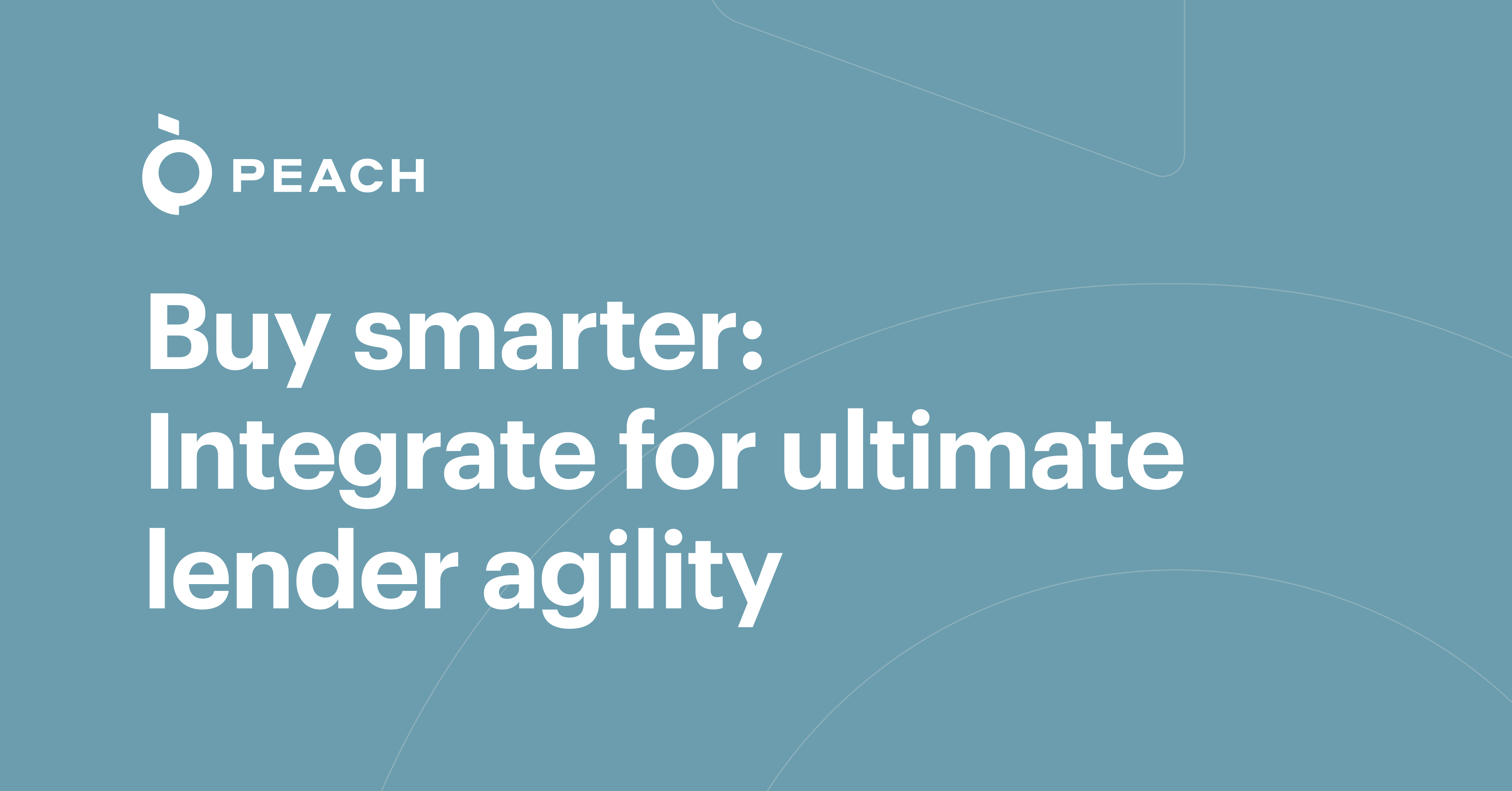Buy smarter: integrate for ultimate lender agility

The buy approach refers to purchasing pre-made software developed by a third party. These solutions are designed to meet the general needs of a broad market segment and can be convenient for many commodity functions or highly niche solutions. However, with broad market application comes rigidity in design and infrastructure. There are trade-offs, just like a full build decision, that lenders should consider when evaluating the buy, build, or integrate decisions.
Advantages of Buying:
-
Cost Efficiency: Lower initial costs and a predictable expense model (often subscription-based). The development costs are spread out among multiple buyers.
-
Quick Deployment: Immediate implementation allows businesses to benefit from the software right away. Reliability: Often tested broadly across diverse environments, potentially offering greater stability out of the box. Vendor responsible for maintaining SLAs and uptime.
-
Updates and Support: Vendors typically provide ongoing support, maintenance, and updates, including bug fixes, security updates, and
-
Leverage Existing Expertise: Vendors often have extensive experience and expertise in the software and its capabilities. This focused expertise makes it easier for the vendor to support roadmaps specific to the technology and invest in upgrades for the whole platform.
Disadvantages of Buying:
-
Limited Customization: May not perfectly align with every business process, requiring workarounds.
-
Dependency: Reliance on the vendor for updates, support, and scalability. Lenders have no roadmap ownership.
-
Generic: May lack unique features that could provide a competitive edge. If lenders purchased software, a competitor can easily buy it too.
-
Potential for Higher Long-Term Costs: Off-the-shelf software license fees can add up over time.
-
Data Protection and Usage: Lenders have less control over data protection and usage.
While the initial cost advantage of off-the-shelf software is tempting, lenders must carefully consider long-term expenses and the potential for limited competitive differentiation. Ultimately, the decision to 'buy' should align with a lender's strategic priorities, and Peach offers a compelling evolution of this approach. We provide the advantages of a rapid, cost-effective 'buy' decision, coupled with the flexibility and customization of a 'build' strategy, through our robust, API-first integration capabilities.
Peach's highly configurable platform, exemplified by features like embedded Loan Replay for transparent change management, empowers lenders to deploy market-ready post-origination servicing tools swiftly. This allows for rapid market prototyping and immediate implementation, while simultaneously enabling the development of bespoke internal systems. Our API-driven architecture ensures that when a lender’s internal systems are ready, seamless redirection of API calls, events, and webhooks can occur without functional redesigns. Effectively, Peach allows lenders to leverage the speed and efficiency of a 'buy' decision, while maintaining the capacity for strategic, phased internal development, maximizing both agility and long-term control.
With Peach, it’s not a binary decision to build or buy, we offer the best of both options through integration. Interested in how we offer similar advantages to a “build” decision with Peach? Check out our article on Strategic Integration: Save Time, Build Smarter or read our industry case study or contact us today to setup a discovery meeting.